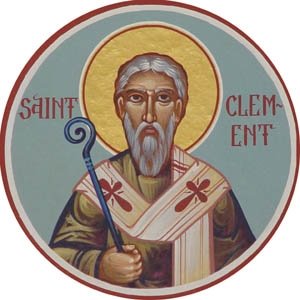The new Judean/Roman novel came about in an odd way. Two years ago I signed with a new agent. We started talking about the projects I had on hand. “They sound cool, but they’re not blockbusters. I want something epic. Tell me, is there a place that you’ve always loved? A physical place? For male writers of historical fiction, the breakout books are usually about places. Pillars of the Earth, Stonehenge, Roma. So what places interest you?”
I gave him a list of four, and even wrote the first chapter of the one I thought was most promising, a novel of Constantinople during the Fourth Crusade.
Instead he pointed to the one that I was least excited about. “That’s the one.”
He was pointing to the Basilica of Saint Clement in Rome.
Two blocks south of the Colosseum, it’s an amazing place, one that I’ve visited every time I’ve been to Rome. For a better idea, I’ve cribbed the following from the Sacred Destinations site:
 The Basilica di San Clemente (Basilica of St. Clement) is an early Christian basilica in Rome dedicated to Pope St. Clement (d. 99 AD).
The Basilica di San Clemente (Basilica of St. Clement) is an early Christian basilica in Rome dedicated to Pope St. Clement (d. 99 AD). The church has a beautiful interior, but it is especially notable for its three historical layers. The 12th-century basilica is built on top of a well-preserved 4th-century church (with many frescoes), which was built next to a 3rd-century Mithraic Temple.
This ancient church was transformed over the centuries from a private home and site of clandestine Christian worship in the 1st century to a grand public basilica by the 6th century, reflecting the Roman Catholic Church's growing legitimacy and power.
In the late 1st century AD, an insula (apartment building) and mansion were built here, separated by a narrow Roman street. These were built on top of earlier structures that were destroyed in the great fire of 64 AD under Nero.
A Christian community is believed to have met in the mansion by the 2nd century. The community was known as the titulus Clementis, which according to custom was probably named for the owner of the mansion. Some believe this was the Roman consul and Christian martyr Titus Flavius Clemens.
In the early 3rd century, the inner courtyard of the insula was made into a Mithraeum, or Temple of Mithras. Mithras was a sun god of Persian origin whose cult was for men only and involved secret initiation rituals in small, cave-like structures.
Increasing veneration of Clement of Rome (d. 99 AD and may be mentioned in Philippians 4:3), combined with the name of the titulus already meeting there, led to the dedication of the church to St. Clement.
The Basilica of St. Clement hosted two papal councils in the 5th century. It was restored in the 6th, 8th, and 9th centuries; frescoes were added during each restoration. The church was badly damaged during the Norman sack of Rome in 1084, and abandoned and Pope Paschal II (1099-1118) built a new church above it in 1108. This is the upper church that has survived largely unchanged to today. On one wall in the courtyard there is a plaque signed by Pope Clement XI that praises the Basilica of San Clemente, declaring, "This ancient church has withstood the ravages of the centuries."
The upper church of San Clemente was given to the Irish Dominicans, who were expelled from Britain, in 1677. The upper church was restored in the 18th century.
My agent was right. This was the place. Now I just had to figure out what story I was going to tell. And of course, what I came up bears little resemblence to the novel(s) I've just finished.


“For male writers of historical fiction, the breakout books are usually about places.”
Heh, I better get a male pseudonym then, because A LAND UNCONQUERED is about a place, not the fate of some female historical character (which seems to be what women are supposed to write).